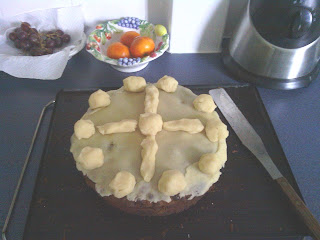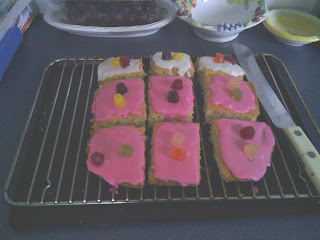I teed up album numbers two and three of Black Sabbath's legendary first six albums on the CD player and proceeded to push on with the task of making the soup. I first covered the bottom of a large metal pan with olive oil and put the hob on a low heat. I then chopped up finely two shallots and one garlic clove and then added them to the pan. As I do with all my soups I made sure the spices were blended in early into the mixture and with this in mind I put a tablespoon of cinnamon into the pan and mixed it thoroughly with the shallots and garlic.
During the three minutes that I left these ingredients cooking I diced up one and a half pounds of carrots and then put them in the pan and left them to cook for twelve minutes. I took care the stir them periodically so as they didn't stick to the bottom of the pan; this is one drawback of using a metal pan to cook soup as it is easy for the ingredients to become stuck to the pan whilst they are being cooked.
While the cooking of the carrots was taking place I took one pound of Rhubarb, which I had purchased from my local greengrocer as I often find fresh fruit and vegetables brought from traditional greengrocers are better then those from supermarkets. I cut the Rhubarb into two centimetre wide rectangles and removed the chewy, papery skin as I did so and then placed it in the pan with the juice from a freshly squeezed orange. I stirred the ingredients thoroughly and let them cook for another five minutes.
 |
| The smell of cinnamon and orange was steaming out of the pan at this point in the preparation. |
I next did something that I thought might ruin the soup but in fact it served to enhance it; I poured half a pint of chicken stock into the pan with a quarter of a pint semi-skimmed milk and as with the previous ingredients I stirred them together well and added a hint of white pepper.
It was now time to blend this bizarre mixture. After blending it I returned it to the pan, quickly reheated it through and then served it. The question was did it taste any good? There was only one answer to this question and that was yes. The cinnamon and fresh orange juice reminded me of Christmas cooking and gave out an aroma that made the kitchen smell a lot better than before while the chicken stock and milk served to add a bit of body to the soup without overwhelming the great taste of the cinnamon and orange juice. The carrot and rhubarb had their place in the soup as they had quite neutral flavours and made it substantial without compromising the taste of the cinnamon and the orange.
 |
| Freshly blended and ready to serve. |












